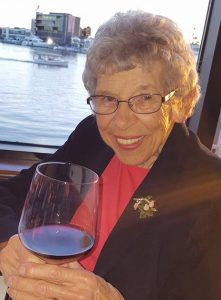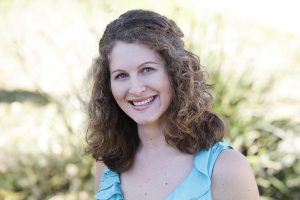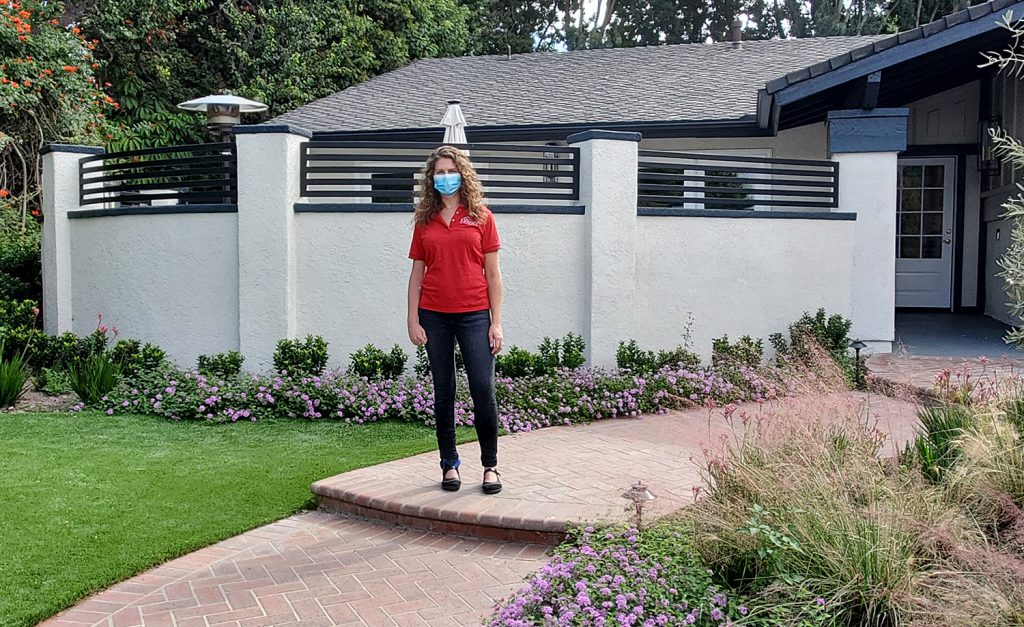
The word “hospice” held little meaning for me until my mother, Virginia, was placed in hospice care in March of 2019.
I had moved in with my mother several years ago to assist her with things like grocery shopping and chores around the house.
Then in early 2019, she had a mini stroke, and I took her to Hoag Hospital. She recovered and came home, but that started a chain of events that included her falling several times in the house, which I admit startled me. Luckily I was usually there to assist her, but more than once I came home to find her crawling on the floor, unable to get up. Those “I’ve fallen and I can’t get up” commercials made me wonder if we needed to do something, but my mother was fiercely independent and resisted any attempts to make her feel old.
Nevertheless, my brother and I were making plans to take her to dinner for her 94th birthday—until I heard her go in the back yard, presumably to take the trash out, a chore I told her to always let me do. But she was stubborn. It was the Dutch in her. A minute later, she started screaming. I rushed out the back door to find she had fallen and hit her head on a large clay pot, cutting herself in the process.
Paramedics were called, she went to Hoag Hospital, and received staples in her head to close the wound.
This started a downward spiral we were unable to stop. Her health declined, and several weeks later, her appetite gone and bodily functions compromised, we took her back to Hoag to see if the doctors could do anything for her.
Their answer: hospice care.
I quickly learned what hospice care is, how it works, and the challenges of coordinating 24-hour assistance. Fortunately, I was able to direct her hospice care at home. We hired round-the-clock helpers, and I oversaw all caregiving. I slept in a nearby bedroom, the constant whir of the oxygen tanks lulling me to sleep.
My mother passed away two weeks after she came home for hospice care..

“Imagine if you did not have the capacity to help your mom with that caregiving support,” said Southern California Hospice Foundation Executive Director Michelle Wulfestieg. “What if there is a person who does not have children, what happens to them? You find people in precarious positions. It happens to young families. I was on the phone with a man whose wife has terminal cancer, they have four kids, how is he going to care for his wife and kids while he tries to hold down a job?”
Wulfestieg, 39, is a longtime resident of Newport Beach and thankfully has not needed hospice care, although she’s had her share of medical emergencies.
“I had my first stroke when I was 11,” Wulfestieg told me when I first met her several years ago. She was diagnosed with a rare vascular brain lesion, known as an Arteriovenous Malformation. At the time, it was inoperable, so she had radiation treatment, but it paralyzed her right side.
“I had to write with my left hand, learn how to tie my shoes with one hand—everything you take for granted,” she said.
After additional radiation treatments, her doctors said there was nothing more they could do, and additional treatments might compromise her already fragile health. Told she would not live past age 30, Wulfestieg decided to live life to the fullest.
She also dedicated her life to serving terminally ill patients and their families, and embarked on a career with Southern California Hospice Foundation.
Then, on January 4, 2008, Wulfestieg suffered a second massive stroke.
“I was 25. I was in a deep coma for eight days,” recalled Wulfestieg. “The doctors did not give me much hope.”
After eight days, she woke up. The doctors were amazed. She went through rehab and eventually went home to a hospital bed in her living room.
“I was weak and could not count past 10. I had someone come and stay with me. I thought this must be what my hospice patients feel like,” said Wulfestieg.
She knew she had to get back to work because her purpose, explained Wulfestieg, is “to encourage people facing potential catastrophic illness to be positive. Having a good attitude can really help in the recovery process.”
She eventually returned to Southern California Hospice Foundation and became executive director.
Fast forward to 2019. The Hospice Foundation purchased a house in South Orange County that had been a residential care facility, and is turning it into Heavenly Home, a six-bedroom residential care home that will allow people to complete their lives with peace and dignity, spending their final days making meaningful memories with loved ones.

“We raised the funds for an all-cash offer, and paid cash for the renovations,” Wulfestieg told me when she gave me a tour of Heavenly Home several months ago. “It looks drastically different. We did a lot of landscaping, put in an olive tree which is a symbol of peace, hope and reconciliation. We had artificial turf donated so we never have to mow the lawn. The landscaping was donated. This is a product of people of the community making this possible.”
Wulfestieg said they are in the process of fundraising, and are working on building an endowment.
“It’s a type of investment where you invest the funds and never touch the principal. The interest is what keeps us going. The funds from the endowment will help pay for the care, so we can help those who cannot afford it. The average length of stay will be about three weeks. Every patient will be on hospice care. When a health care provider has a patient that cannot die in their own home or go to a nursing facility, they can come here as an option.”
Heavenly House is ready to welcome its first residents, but Wulfestieg said they need to have funds in place before they open.
“Hospice is a Medicare benefit—if you have a terminal illness, hospice is paid for,” said Wulfestieg. “Hospice does not cover room and board or caregiving. We are trying to help with room and board and 24-hour care. We will have 24-nour caregivers, ensuring no patient dies alone.”
According to Southern California Hospice Foundation, an anonymous friend of the Foundation is helping to jumpstart the Heavenly Home Endowment with a Million Dollar Match campaign. This giving opportunity allows people to contribute and have their impact doubled, ensuring sustainability for the Heavenly Home.
The matching campaign ends this November. The Foundation needs help in raising the remaining $400,000 for the match, which will allow SoCal Hospice to begin serving patients as soon as 2022.
SoCal Hospice Foundation participated in the Orange County Community Foundation’s Giving Day, Preserving Dignity, on July 14. The goal was to raise $50,000 during this one-day online event, with all dollars raised matched by the generous donor’s Million Dollar Match. Amazingly, So Cal Hospice raised $263,040. All of the funds raised will be allocated directly to the endowment to make Heavenly Home operational and provide 24-hour care for Heavenly Home patients.
For more information on Southern California Hospice Foundation, visit https://socalhospicefoundation.org.




